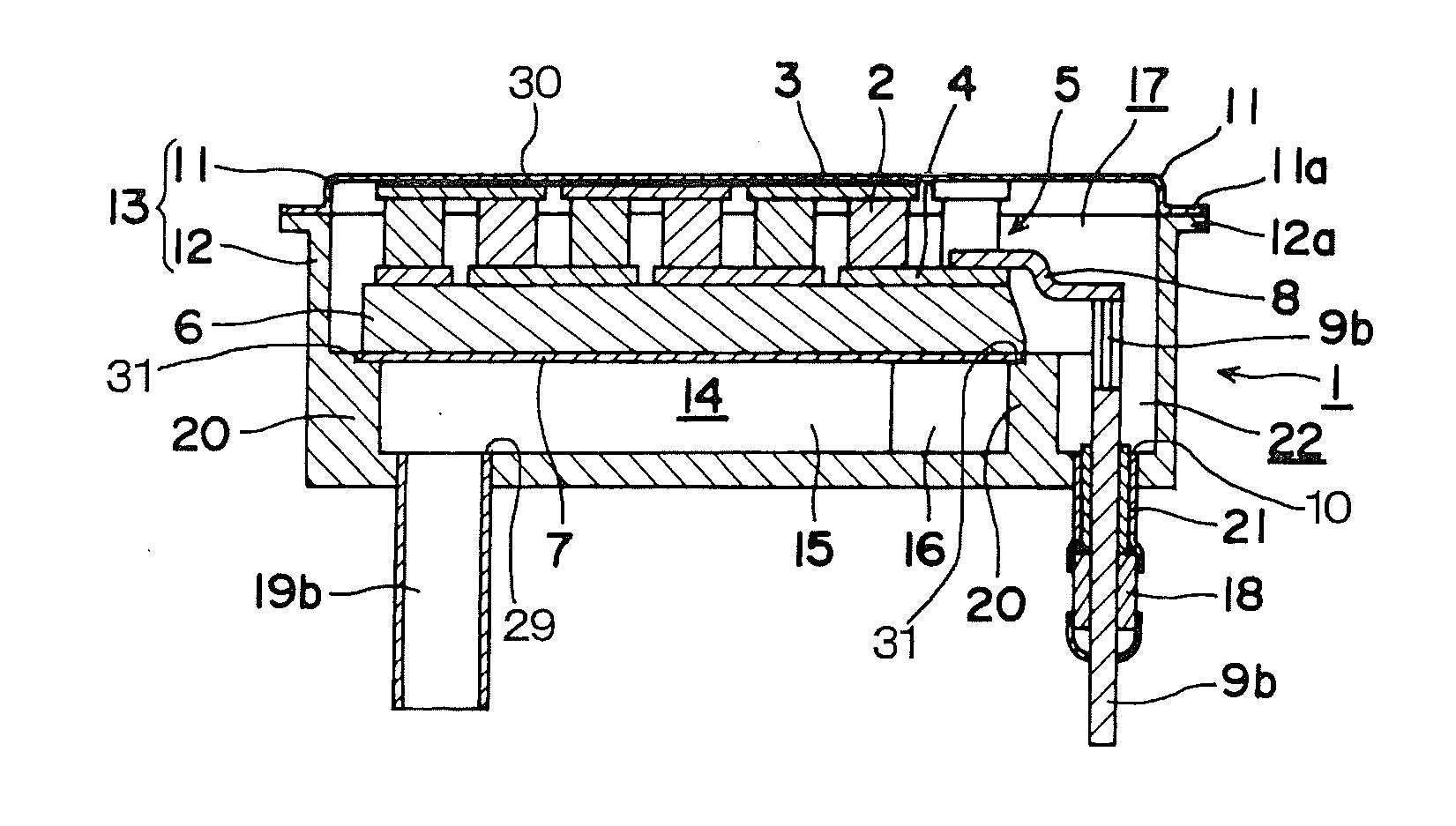Packaged thermoelectric conversion module
a thermoelectric conversion module and thermoelectric conversion technology, applied in the direction of thermoelectric devices with peltier/seeback effect, basic electric elements, electric apparatus, etc., can solve the problems of difficult to increase difficult to realize the size of the thermoelectric conversion module having a larger than that described above, and difficulty in increasing the size of the thermoelectric conversion module, etc., to achieve the effect of reducing the thermal contact resistance at the contact interface, reducing the thermal contact resistance resistan
- Summary
- Abstract
- Description
- Claims
- Application Information
AI Technical Summary
Benefits of technology
Problems solved by technology
Method used
Image
Examples
example
[0054]The performance of the packaged thermoelectric conversion module according to the present invention was compared to that of an exposed thermoelectric conversion module which was not contained in the airtight container as illustrated in FIG. 13. The components of the packaged thermoelectric conversion module and the thermoelectric conversion module are identified by the same numerals, and the detailed description will be skipped.
[0055]Firstly, a low-temperature thermoelectric conversion modules 5 was prepared by using BiTe of 4×4 mm as the thermoelectric semiconductor 2. The output was measured when a temperature of 150° C. was applied to the high-temperature side of the module, a temperature of 20° C. was applied to the low-temperature side, and a temperature difference of 130 K was applied. FIG. 14 illustrates the result. It was confirmed from the result that the output of 3.2 W was obtained.
[0056]Next, the thermoelectric conversion modules having the configuration illustrate...
PUM
 Login to View More
Login to View More Abstract
Description
Claims
Application Information
 Login to View More
Login to View More - R&D
- Intellectual Property
- Life Sciences
- Materials
- Tech Scout
- Unparalleled Data Quality
- Higher Quality Content
- 60% Fewer Hallucinations
Browse by: Latest US Patents, China's latest patents, Technical Efficacy Thesaurus, Application Domain, Technology Topic, Popular Technical Reports.
© 2025 PatSnap. All rights reserved.Legal|Privacy policy|Modern Slavery Act Transparency Statement|Sitemap|About US| Contact US: help@patsnap.com



